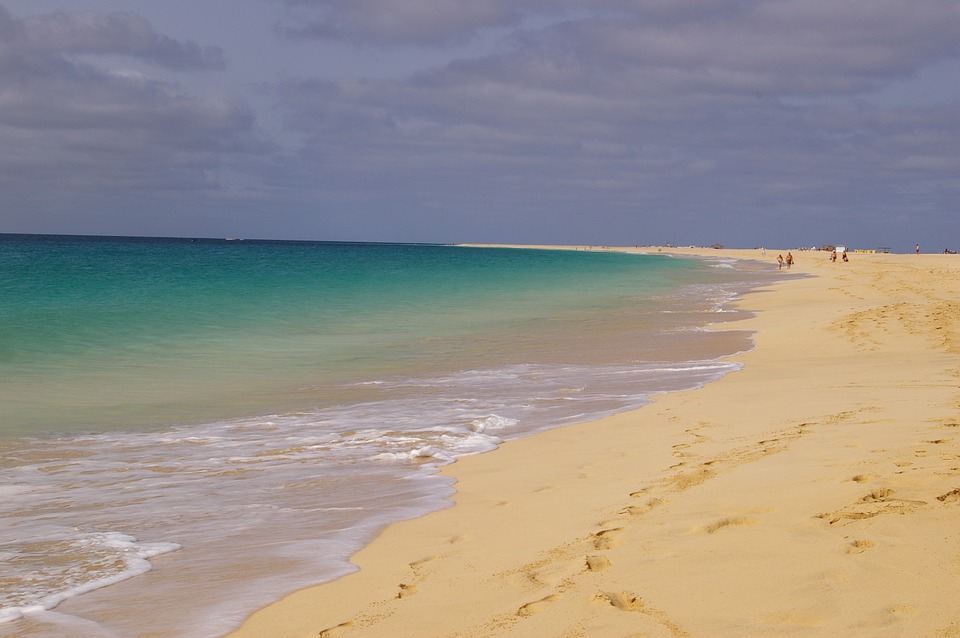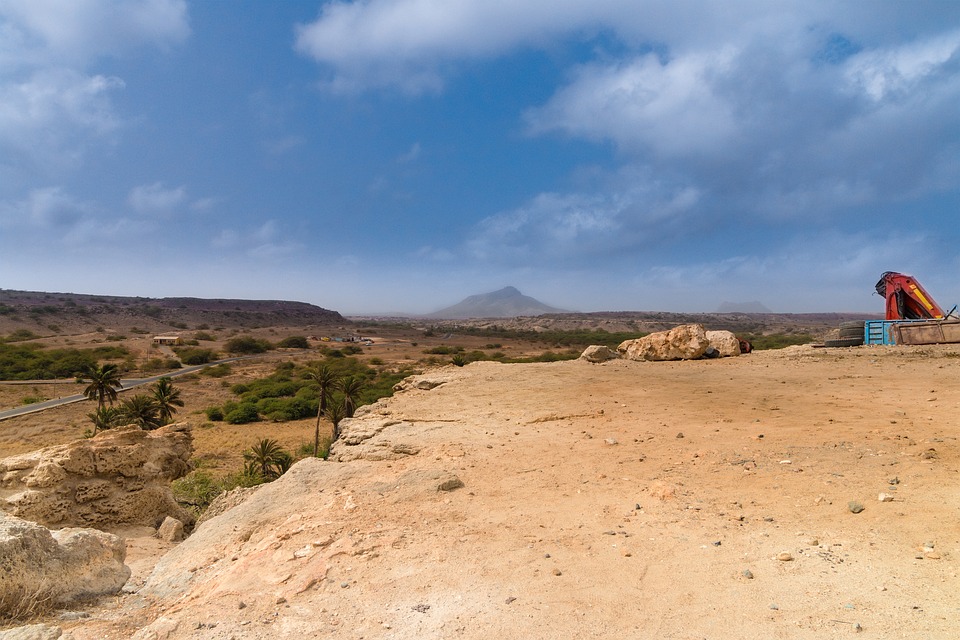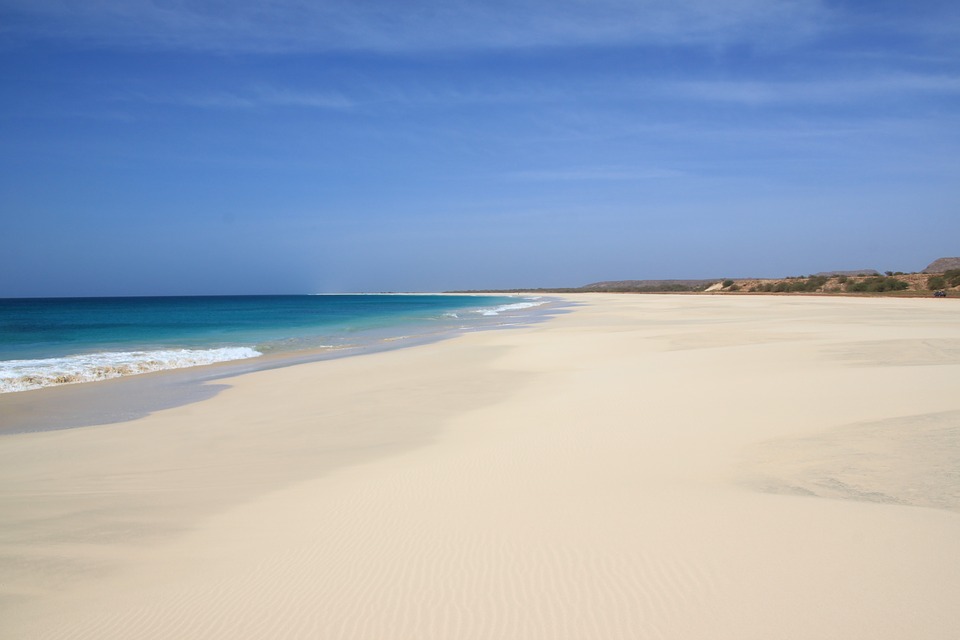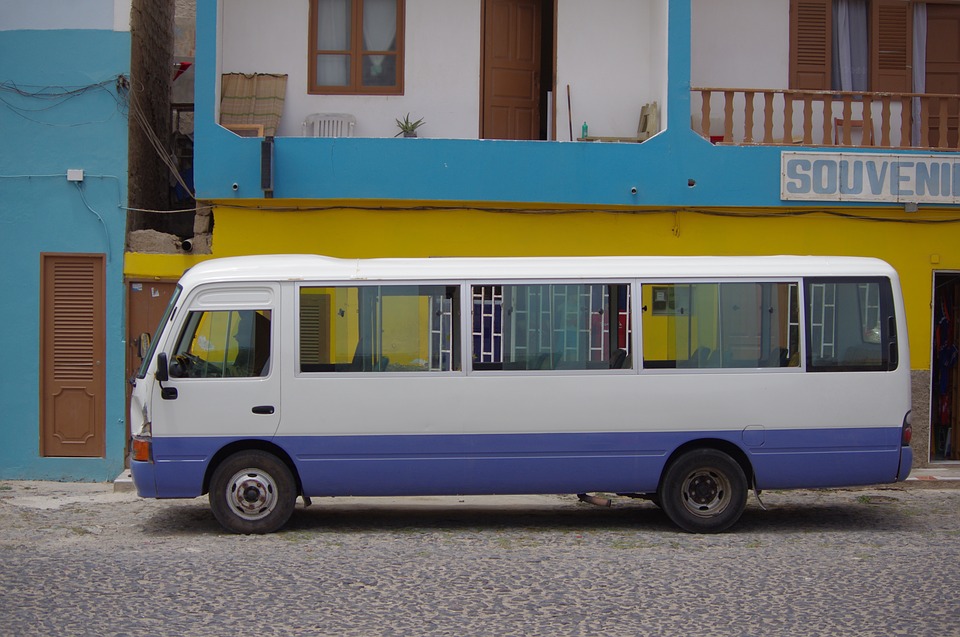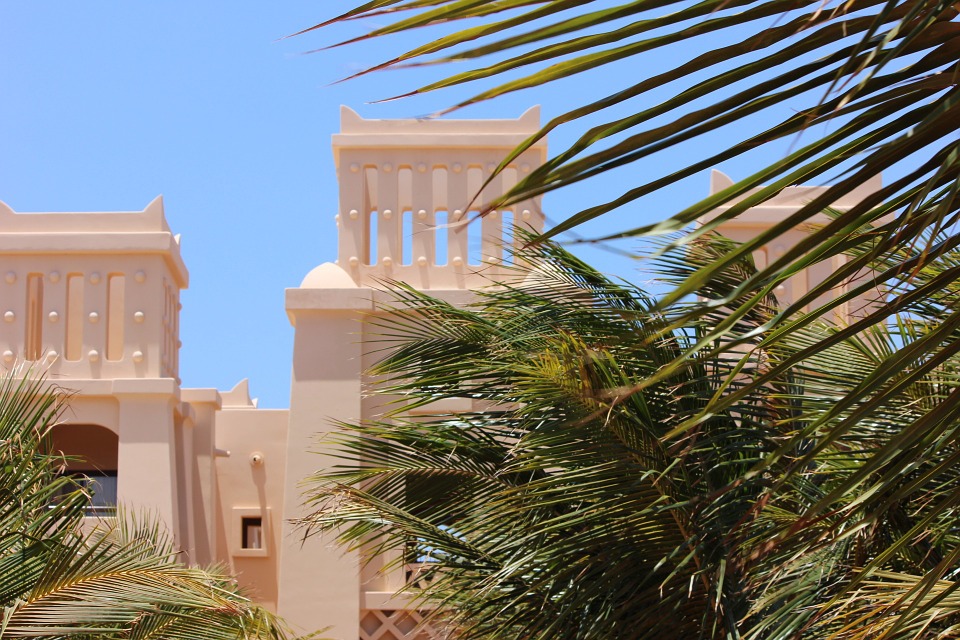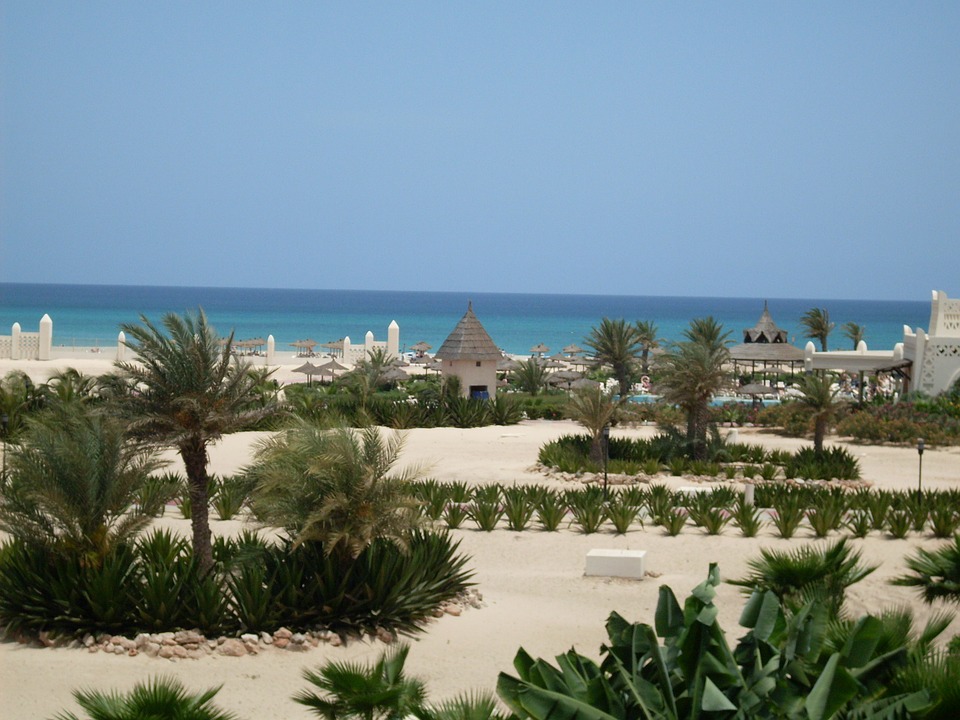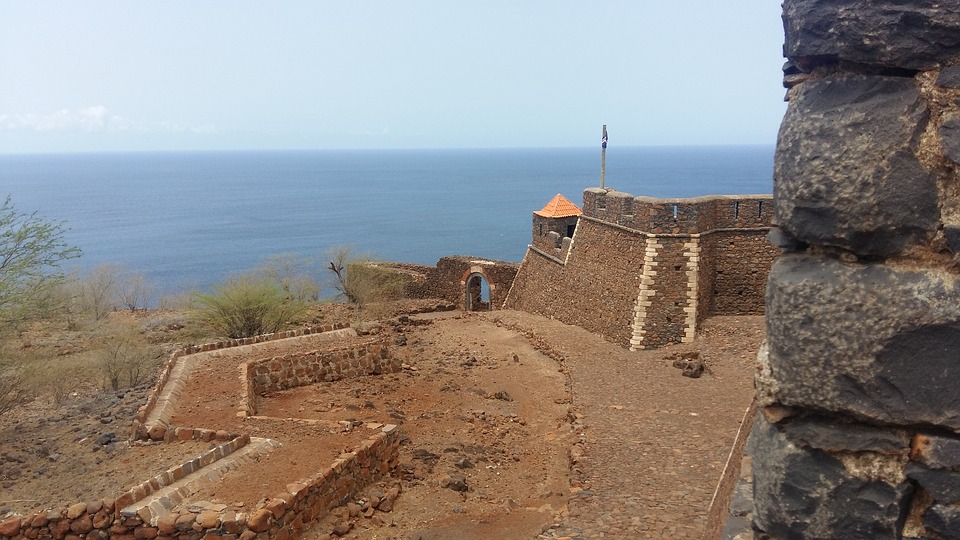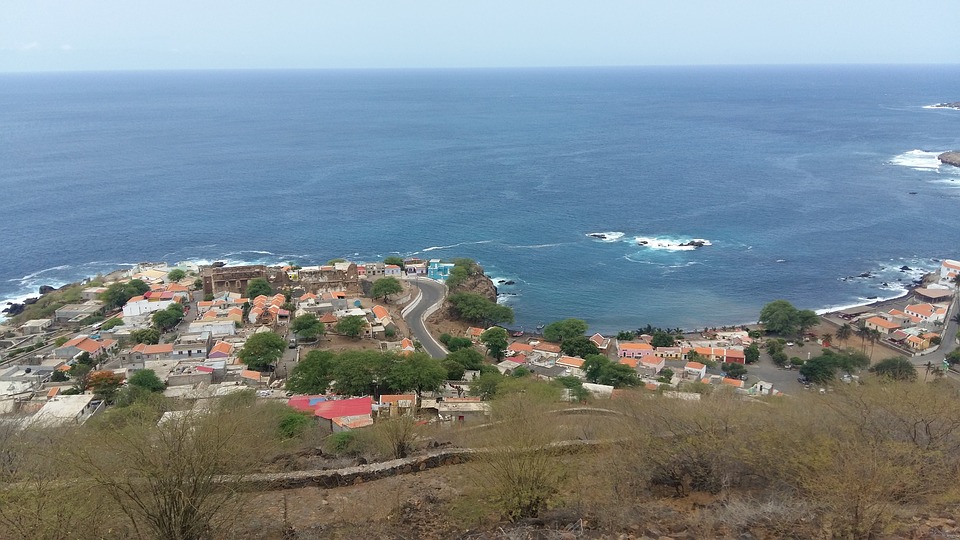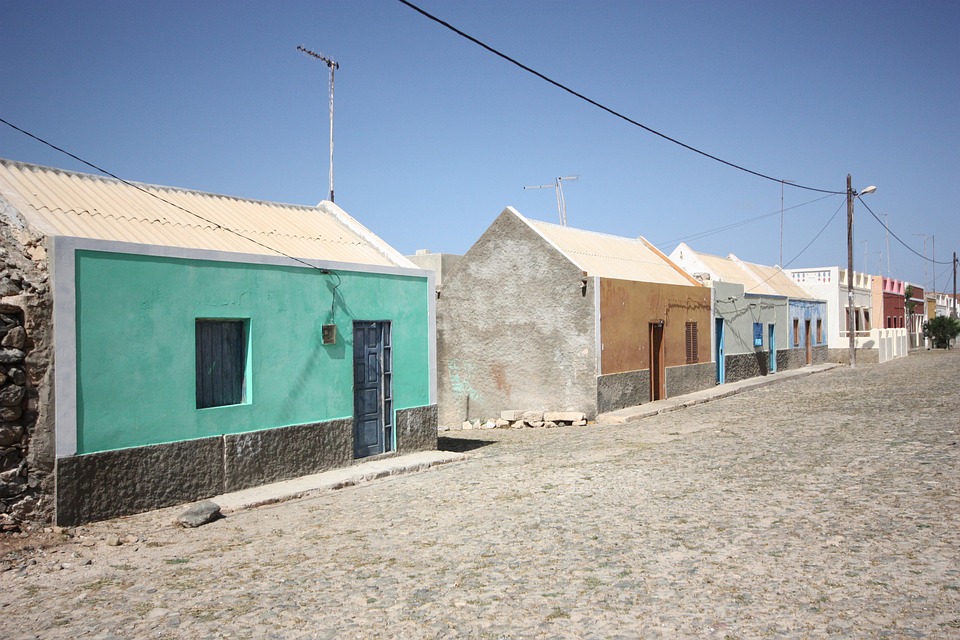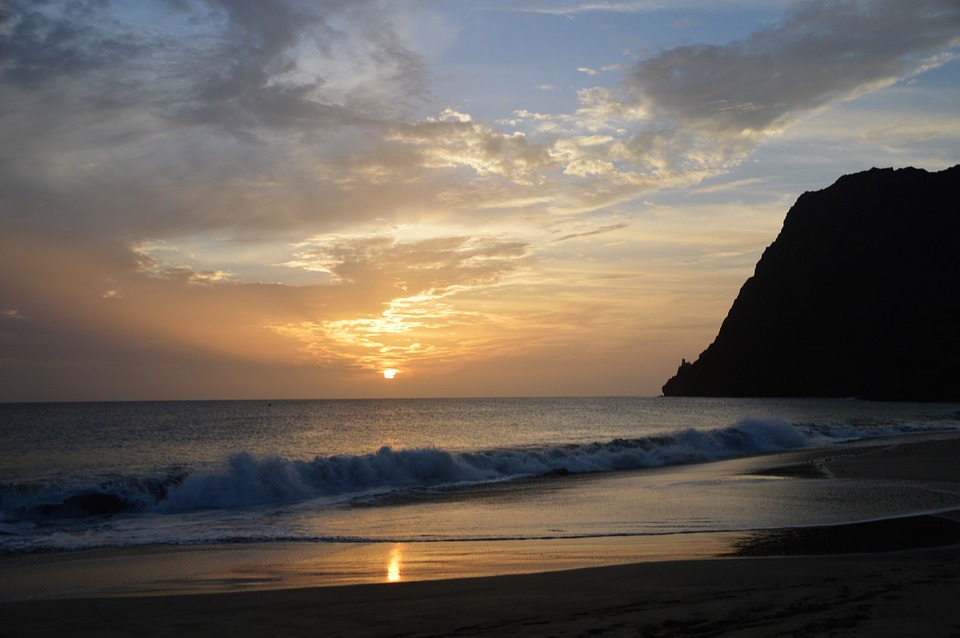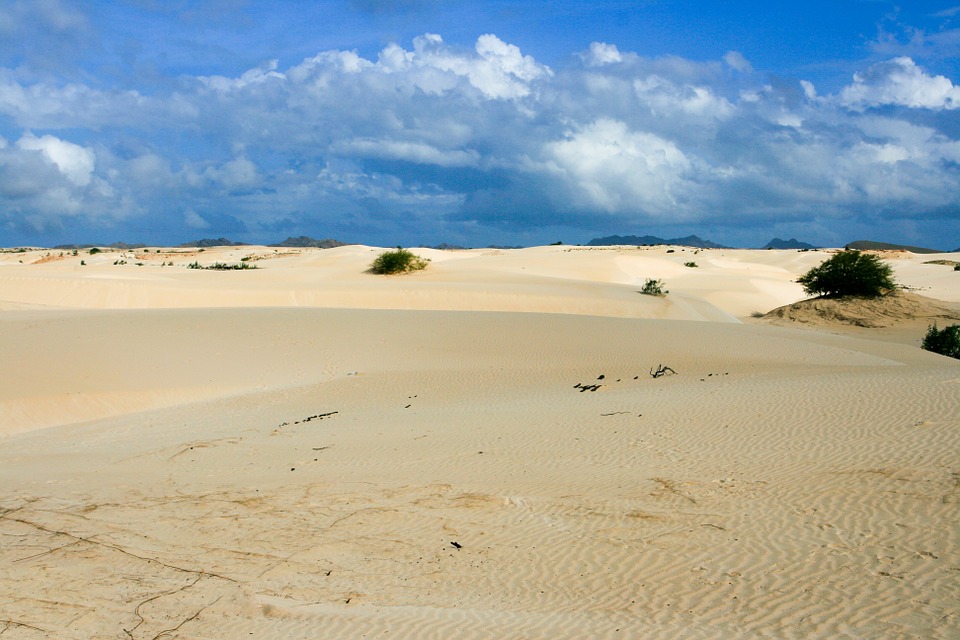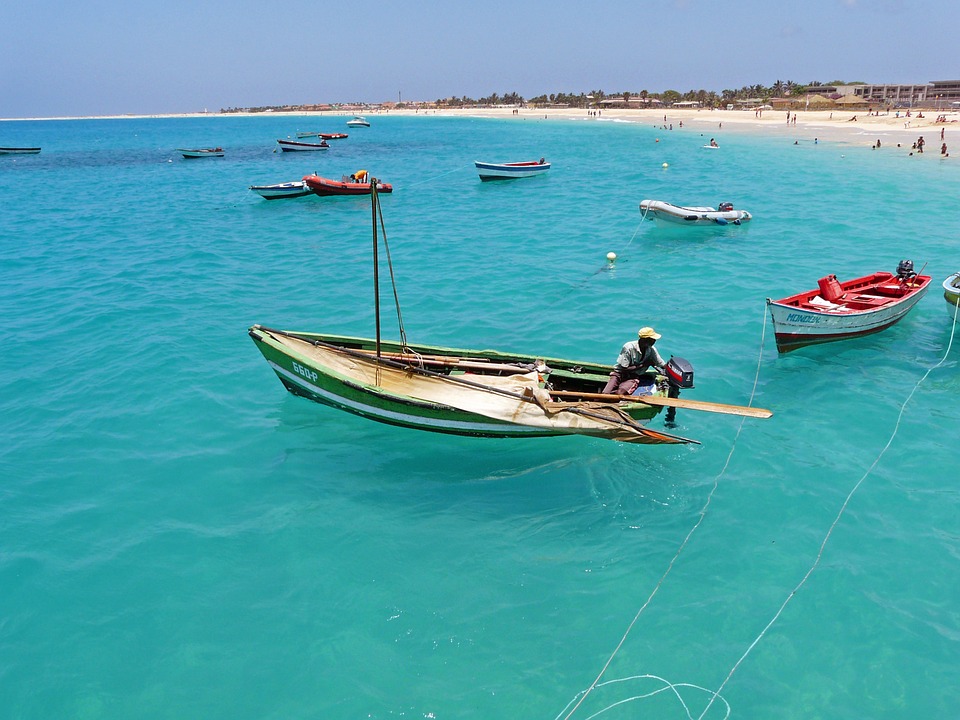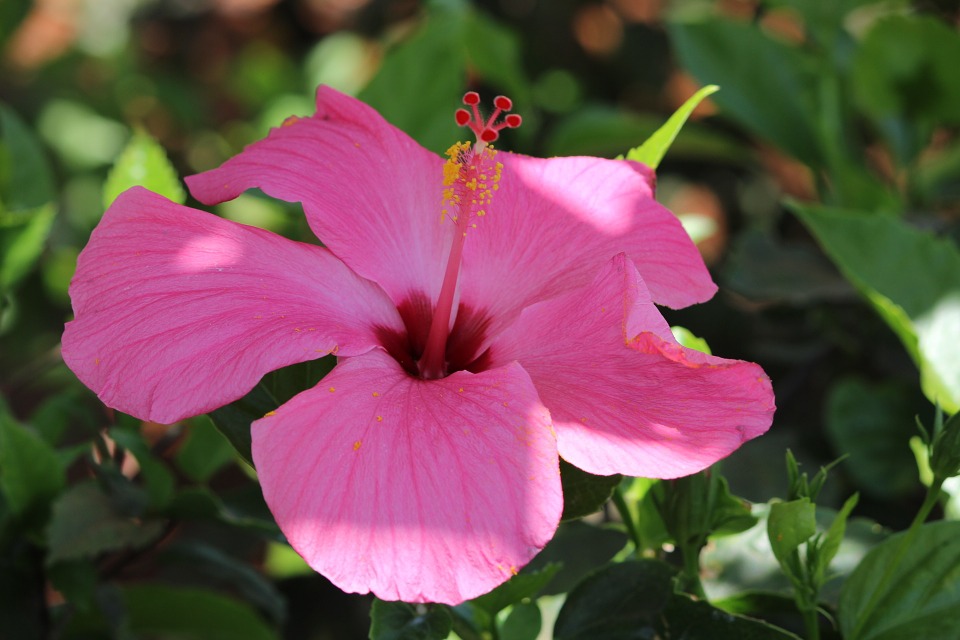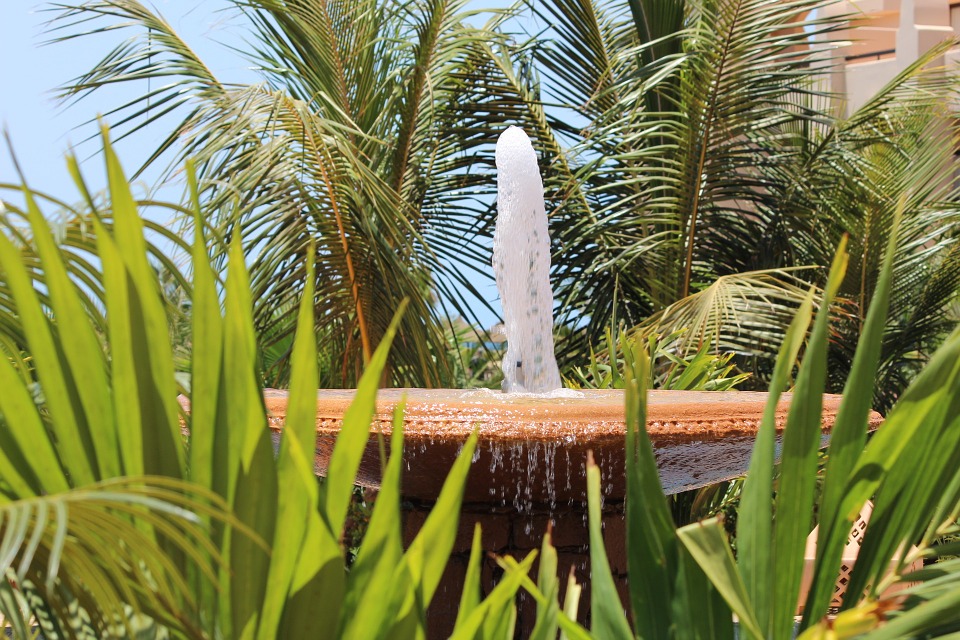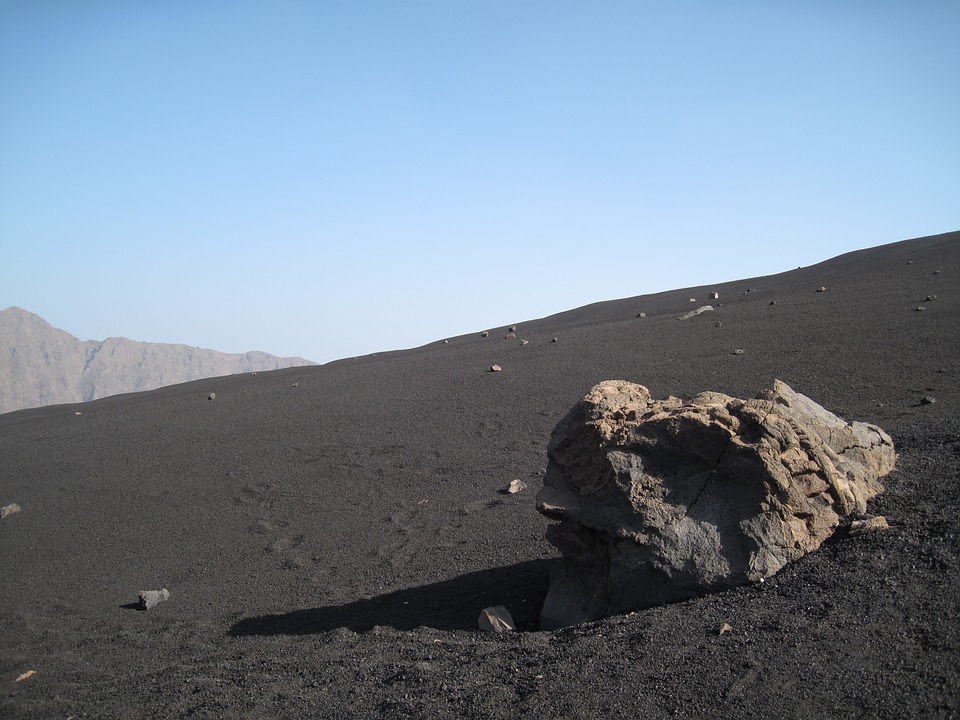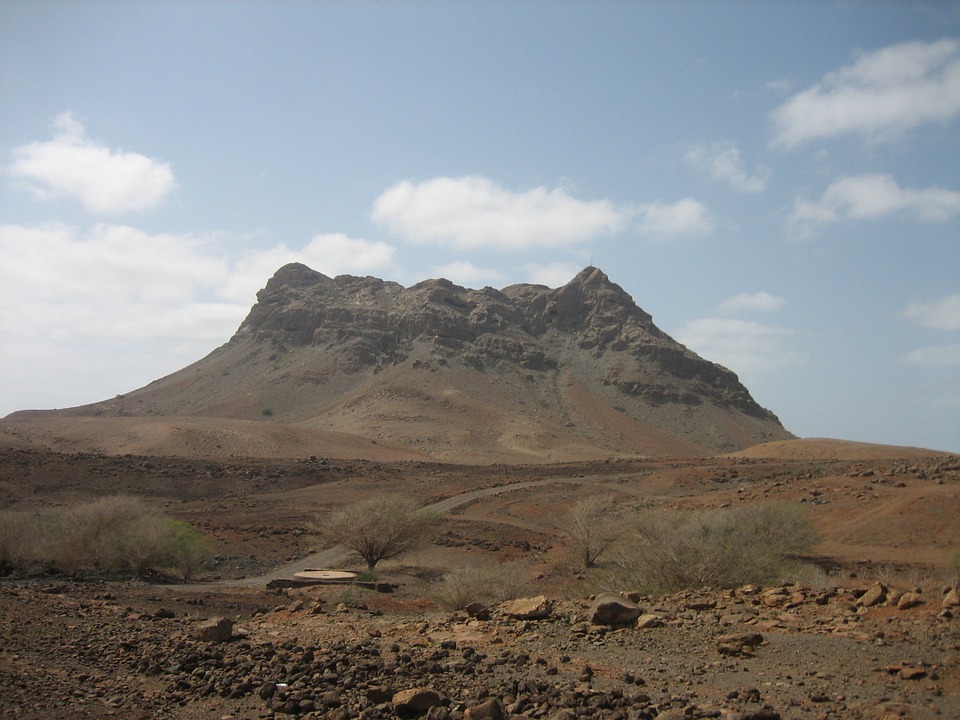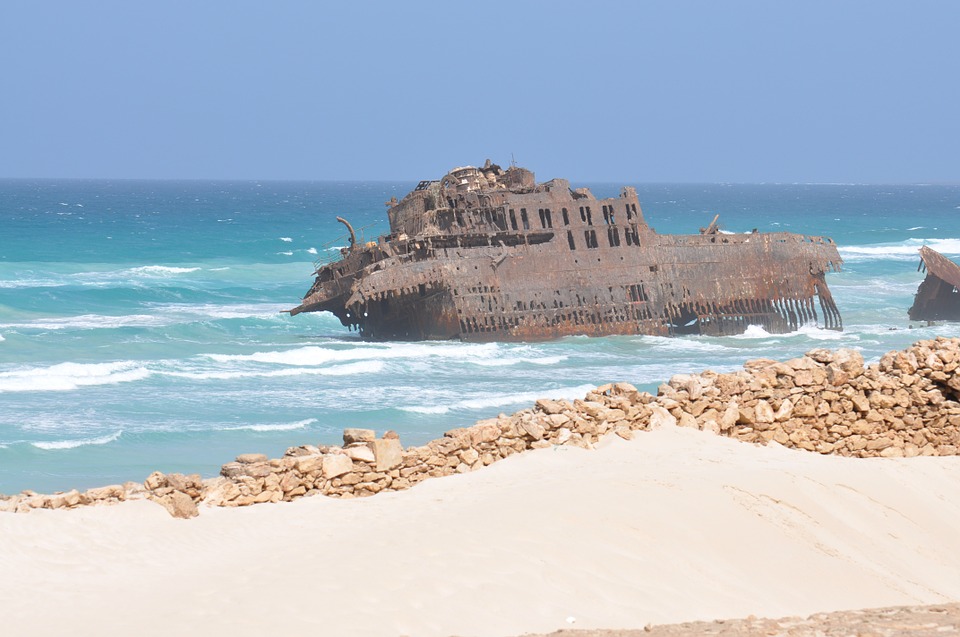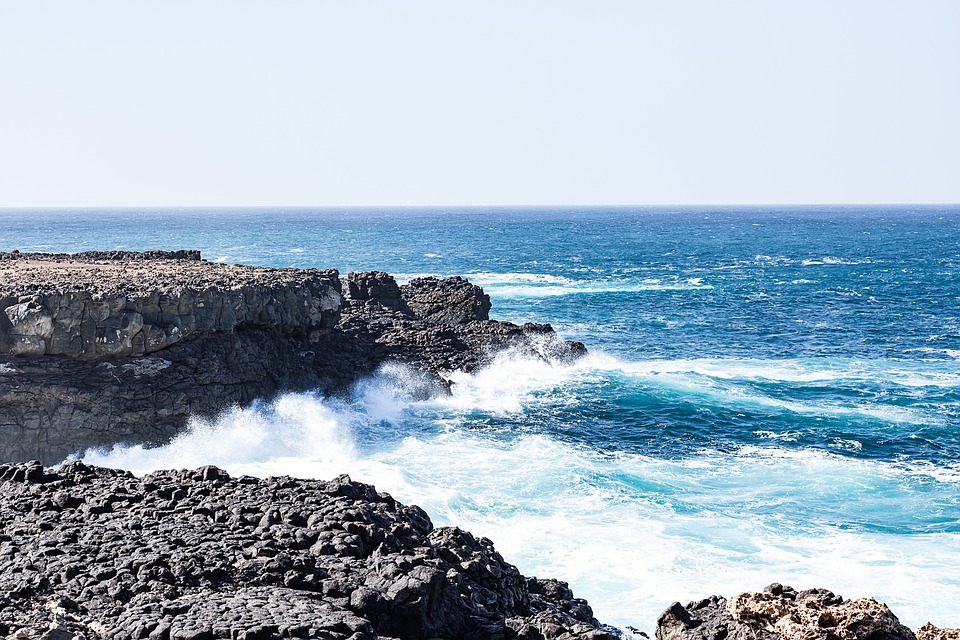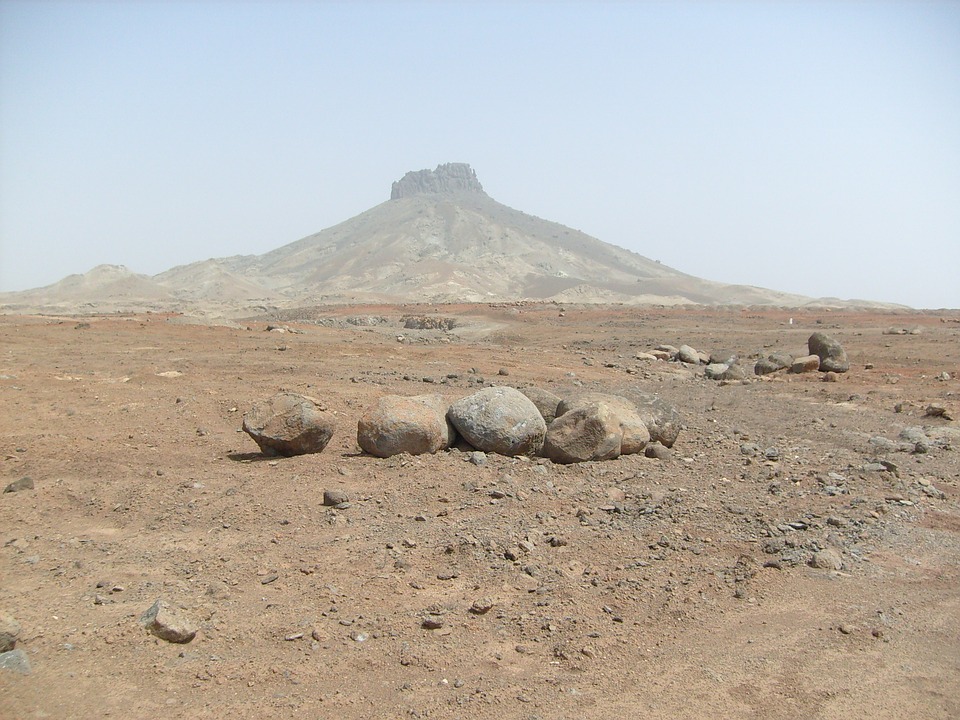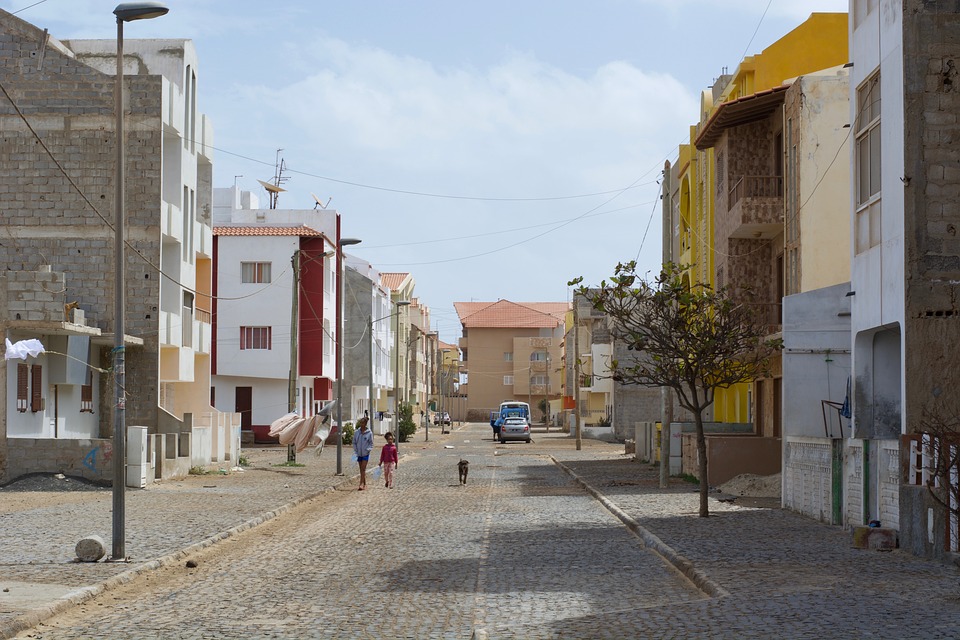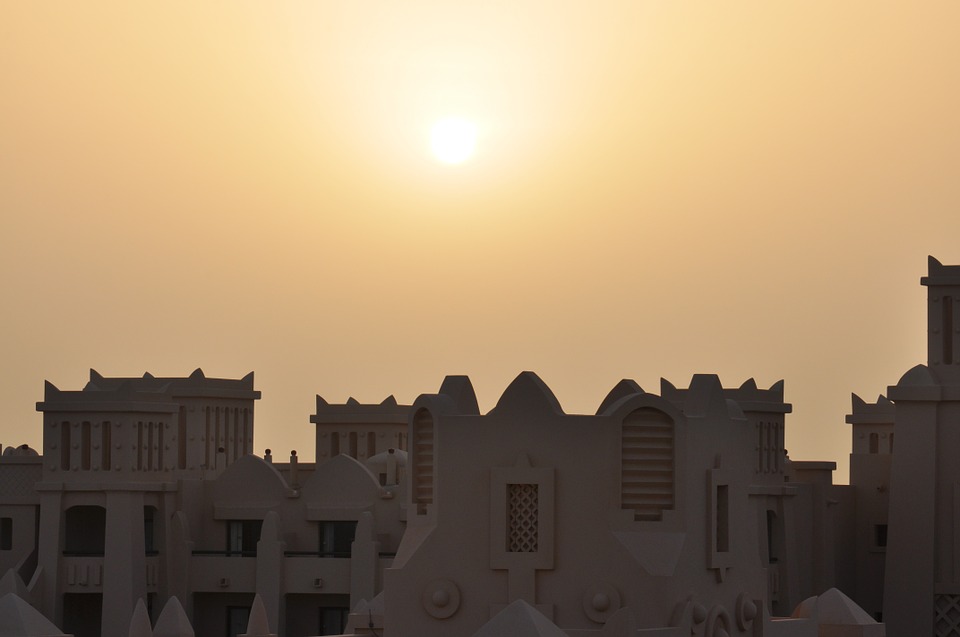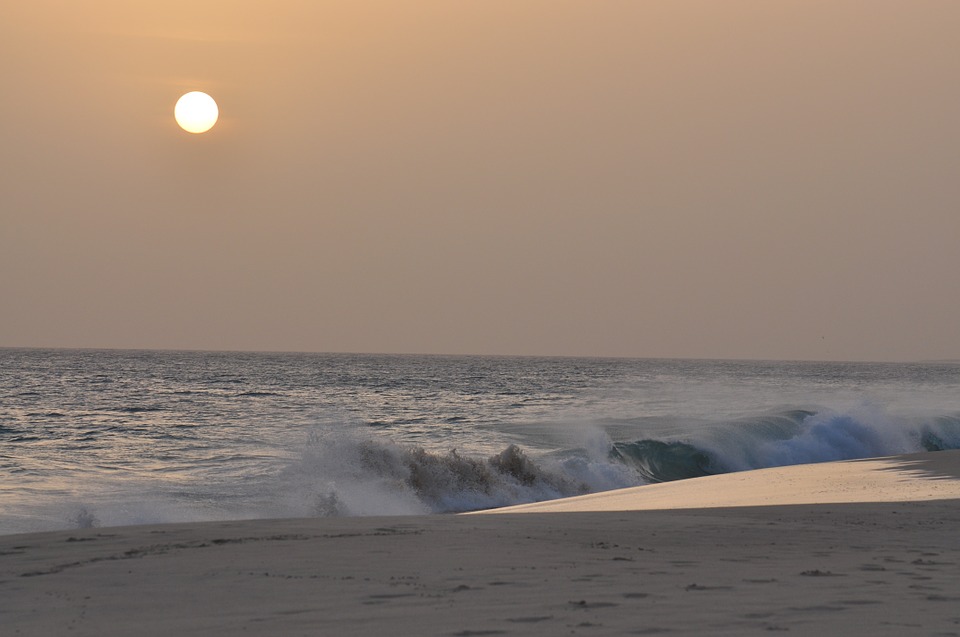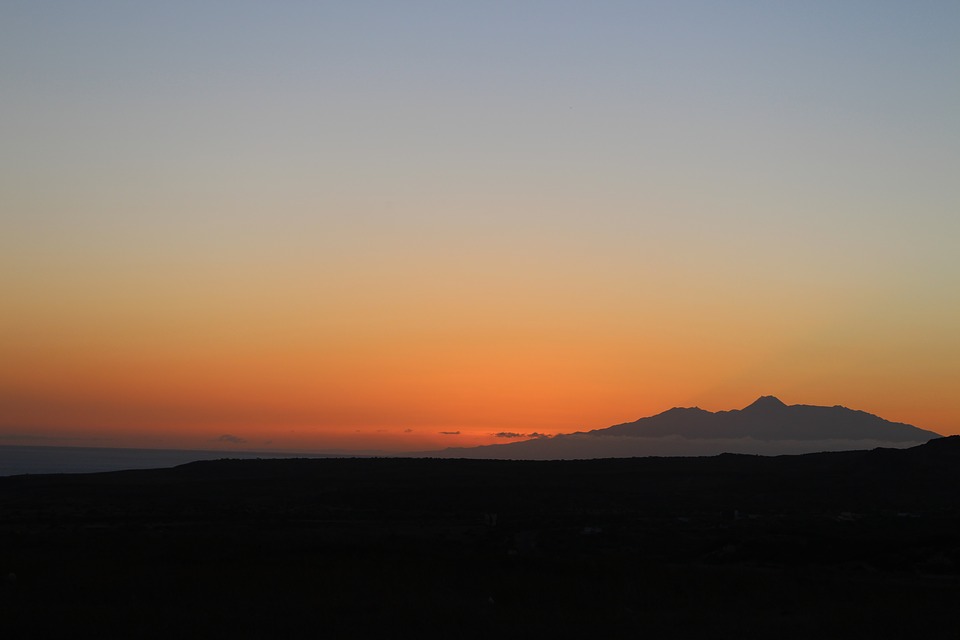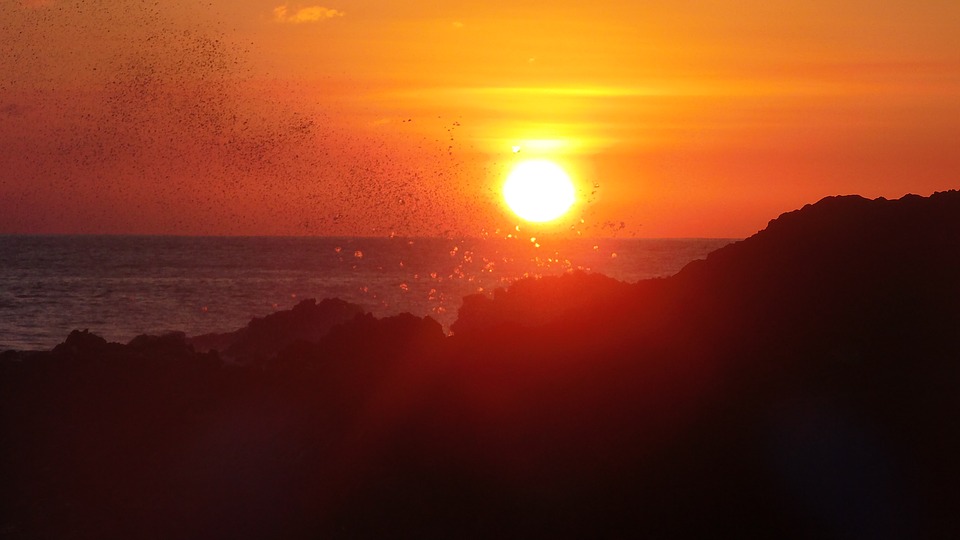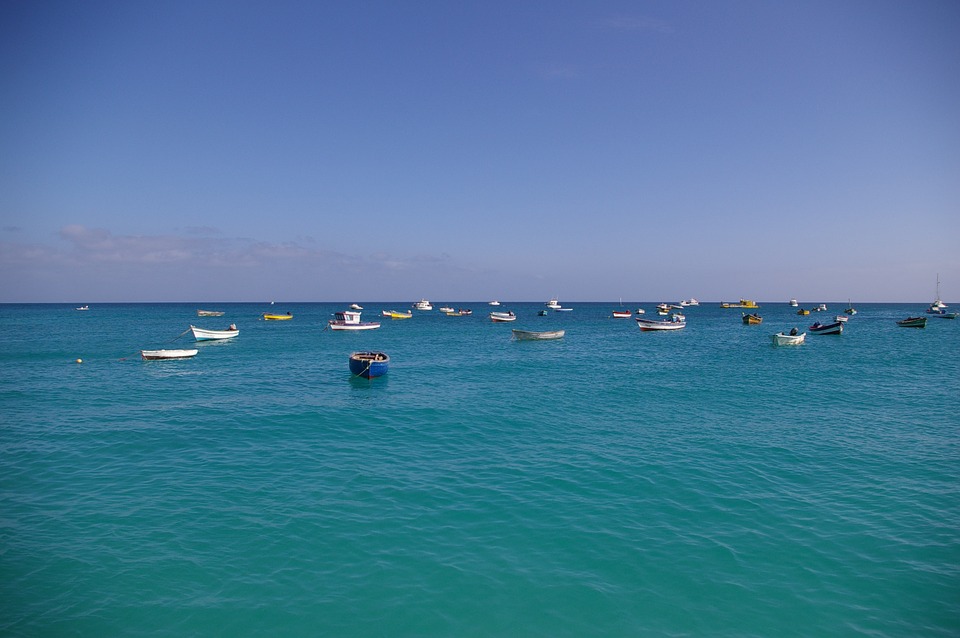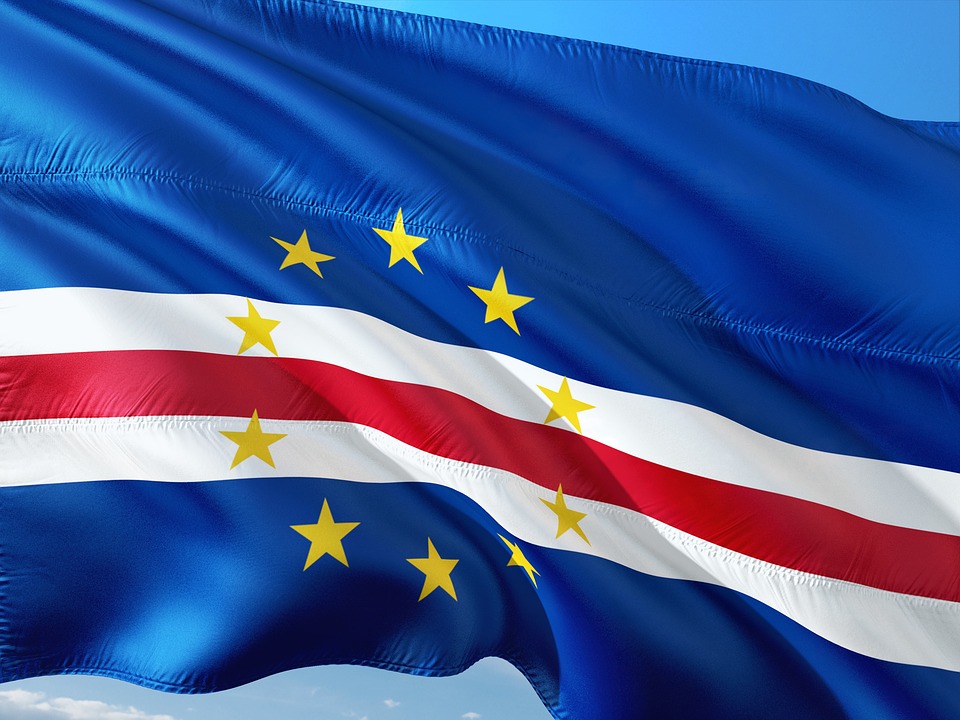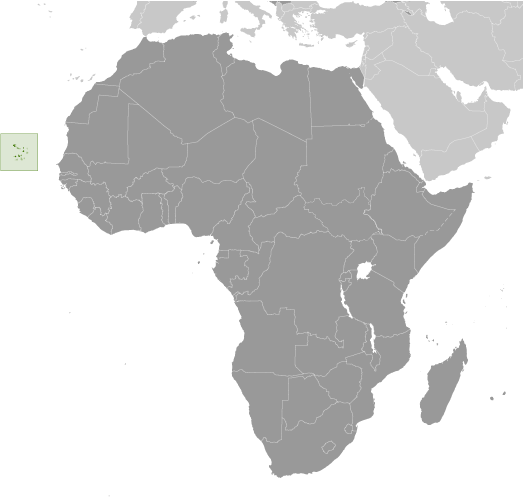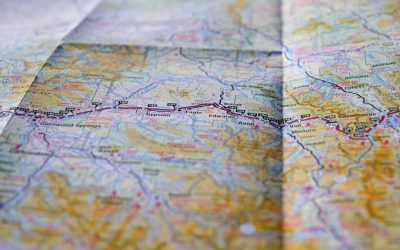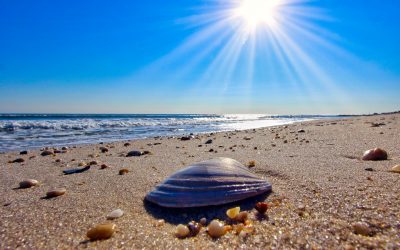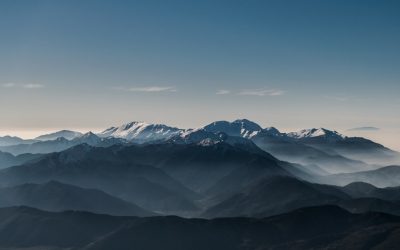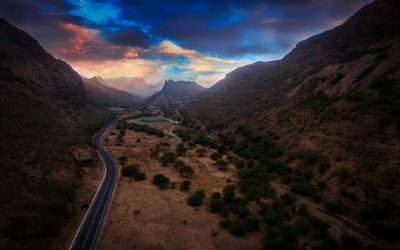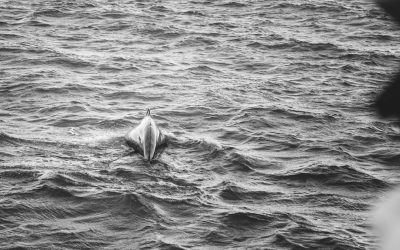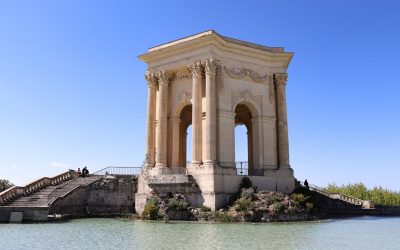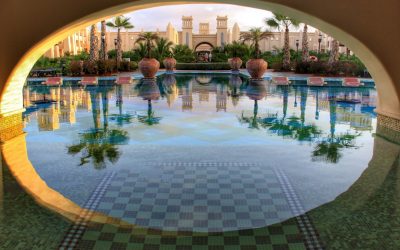Cape Verde
(República de Cabo Verde (Republic of Cape Verde))

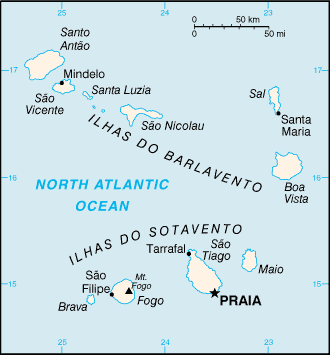
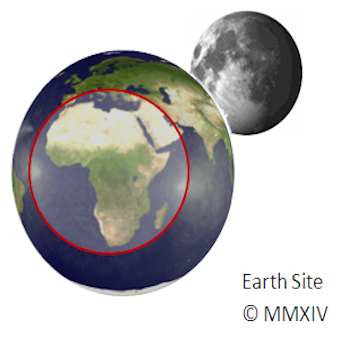
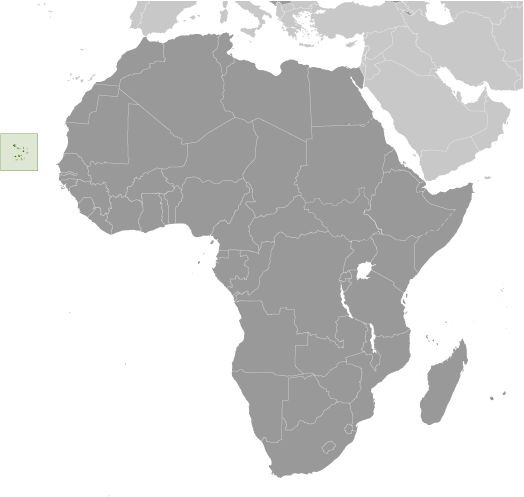
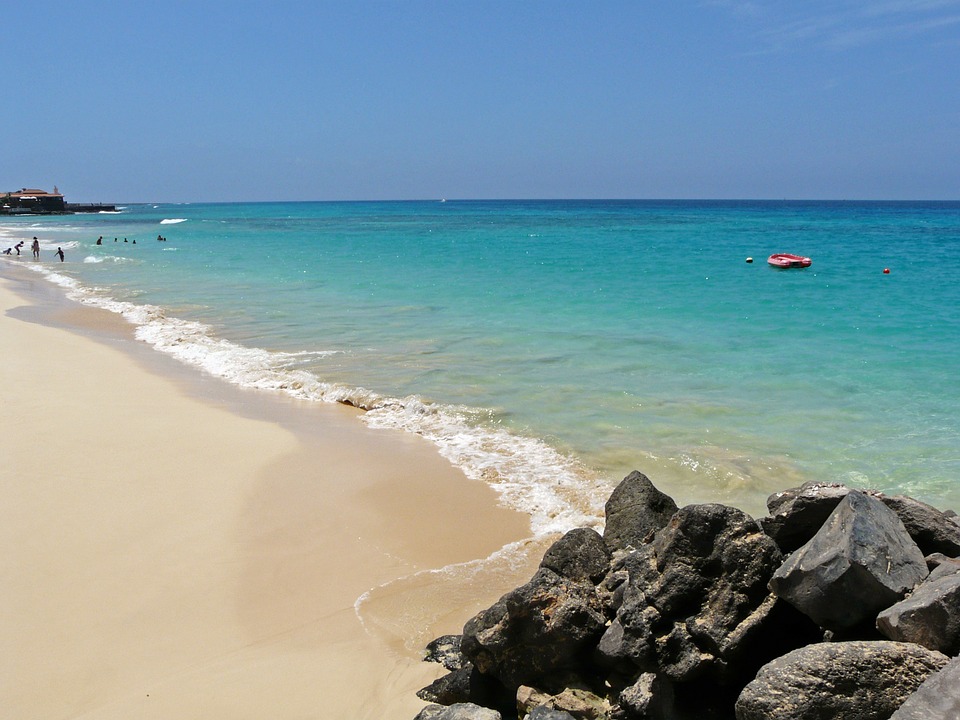
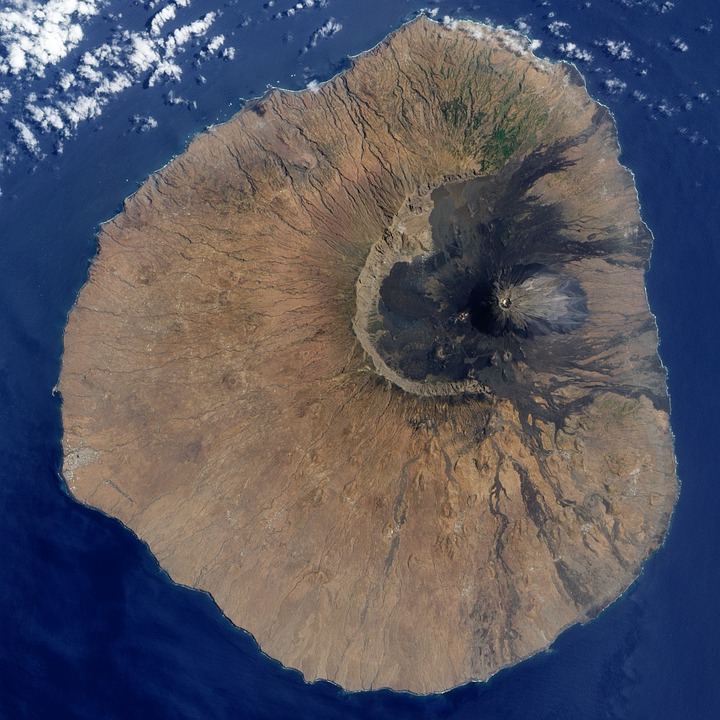
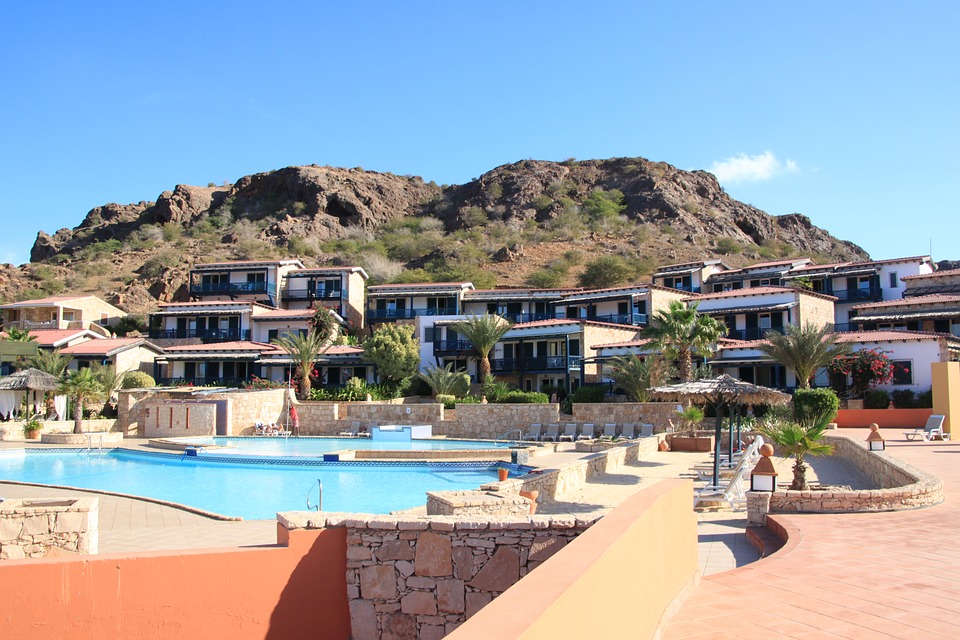
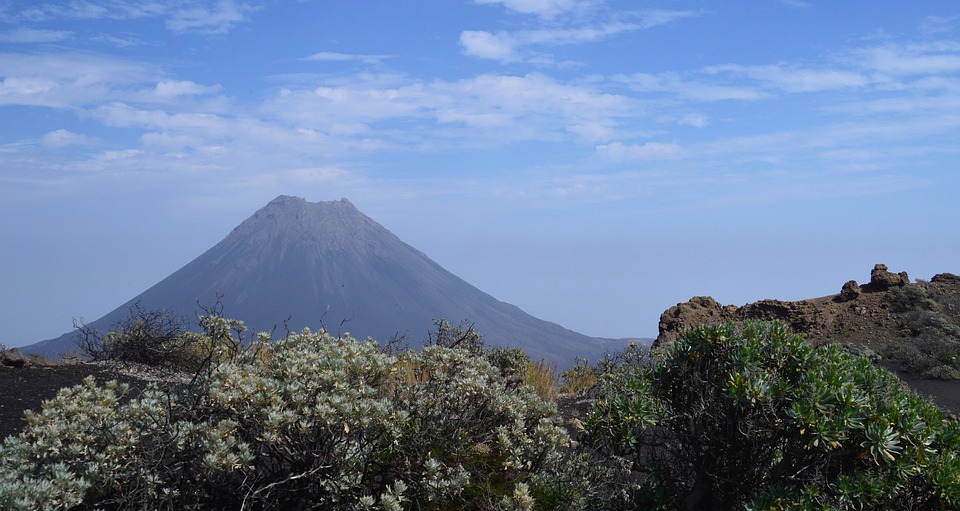
Capital of Cape Verde: Praia
Population (Estimated July 2012): 523,568
Area: 4,033 km2 or 1,557 mi2
Currency: Escudo (C.V.Esc.)
Official Language: Portuguese
Political Information: Parliamentary Republic
Official Religion: No Official Religion
(But mainly Roman Catholic and Protestant)
Highest Mountain: Mt. Fogo (a volcano) at 2,829m or 9,281ft
GDP Official Exchange Rate (OER is more precise at gauging a countries economic power)
(Estimated 2011): $1.9 billion (US$) or (GBP)
GDP (OER) Per Capita (per member of the population estimated 2011): (US$) or (GBP)
GDP Purchasing Power Parity (PPP is good for gauging living conditions and use of resources but not as accurate as OER. This data has been calculated based on the sum value of all goods and services produced in the country valued at prices prevailing in the United States)
(Estimated 2011): $2.04 billion (US$) or (GBP)
GDP (PPP) Per Capita (per member of the population estimated 2011): $4,000 (US$) or (GBP)
Time Zone (GMT/UTC): -1:00
Counties/Provinces/States: 17 municipalities (concelhos, singular – concelho); Boa Vista, Brava, Maio, Mosteiros, Paul, Porto Novo, Praia, Ribeira Brava, Ribeira Grande, Ribeira Grande de Santiago, Sal, Santa Catarina, Santa Catarina do Fogo, Santa Cruz, Sao Domingos, Sao Filipe, Sao Lourenco dos Orgaos, Sao Miguel, Sao Salvador do Mundo, Sao Vicente, Tarrafal, Tarrafal de Sao Nicolau
Leaders: President Jorge Carlos FONSECA (since 9 September 2011) with Prime Minister Ulisses CORREIA E. SILVA (since 22 April 2016)
Sources: CIA World Fact Book, Encyclopaedia Britannica.
Cabo Verde
Cabo Verde, also known as Cape Verde, is a group of islands located off the coast of West Africa. Despite its small size and relatively unknown status, Cabo Verde is often referred to as a hidden gem in the region. With its stunning natural beauty, rich cultural heritage, and warm hospitality, it is no wonder that Cabo Verde is becoming an increasingly popular destination for travellers seeking a unique and authentic experience.
Geography and Climate of Cabo Verde: A Tropical Paradise
Cabo Verde consists of ten main islands and several smaller ones, scattered across the Atlantic Ocean. The archipelago is located approximately 570 kilometres off the coast of Senegal and covers a total area of around 4,033 square kilometres. Each island has its own distinct landscape, ranging from sandy beaches and turquoise waters to rugged mountains and volcanic peaks.
The climate in Cabo Verde is tropical, with warm temperatures throughout the year. The islands enjoy a pleasant year-round climate, with temperatures averaging between 24°C and 30°C. The dry season typically runs from November to June, while the rainy season occurs between July and October. This makes Cabo Verde an ideal destination for beach lovers and outdoor enthusiasts who can enjoy activities such as swimming, snorkelling, hiking, and exploring the unique volcanic landscapes.
History of Cabo Verde: From Portuguese Colonization to Independence
Cabo Verde has a rich history that dates back to the 15th century when Portuguese explorers discovered and colonized the islands. The archipelago served as an important stopover point for ships travelling between Europe, Africa, and the Americas. The Portuguese established settlements on the islands and introduced sugarcane plantations, which became the mainstay of the economy during the colonial period.
In the late 19th century, Cabo Verde became an important hub for transatlantic trade and a centre for the slave trade. The islands played a significant role in the triangular trade between Europe, Africa, and the Americas. However, the abolition of slavery in the 19th century led to a decline in the economy, and Cabo Verde struggled to find its footing.
The struggle for independence began in the 1950s, with the establishment of political parties advocating for self-rule. After years of peaceful protests and negotiations, Cabo Verde finally gained independence from Portugal on July 5, 1975. Since then, the country has made significant progress in terms of political stability and economic development.
Culture and Traditions of Cabo Verde: Music, Dance and Festivals
Cabo Verdean culture is a vibrant blend of African, European, and Creole influences. The islands have a rich musical heritage, with genres such as morna, coladeira, and funaná being popular throughout the archipelago. Morna, often referred to as the national music of Cabo Verde, is a soulful and melancholic genre that reflects the country’s history and cultural identity.
Dance is also an integral part of Cabo Verdean culture, with traditional dances such as the batuque and the tabanka being performed during festivals and celebrations. These dances are characterized by their energetic movements and rhythmic beats.
Cabo Verdeans are known for their love of festivals and celebrations. The most famous festival is Carnival, which takes place in February or March each year. During Carnival, the streets come alive with colourful parades, music, dance, and elaborate costumes. Other popular festivals include the Festival de Baía das Gatas, which celebrates music and culture, and the Festival de Gamboa, which showcases local talent.
Food and Cuisine of Cabo Verde: A Blend of African and Portuguese Influences
Cabo Verdean cuisine is a delicious fusion of African and Portuguese flavours. The islands’ location and history have influenced the local dishes, which often feature seafood, beans, rice, and tropical fruits. One of the most famous dishes is Cachupa, a hearty stew made with corn, beans, and various meats or fish. Cachupa is considered the national dish of Cabo Verde and is often enjoyed during special occasions and festivals.
Another popular dish is Pastel com diabo dentro, which translates to “pastry with the devil inside.” This savoury pastry is filled with spicy tuna or chicken and is a favourite snack among locals and visitors alike. Other traditional dishes include grilled fish, lobster, and feijoada, a bean stew with pork.
In addition to its delicious cuisine, Cabo Verde is also known for its strong coffee and grogue, a local spirit made from sugarcane. These beverages are often enjoyed alongside a meal or as a way to socialize with friends and family.
Tourism in Cabo Verde: Beaches, Hiking and Water Sports
Cabo Verde has seen a significant increase in tourism in recent years, thanks to its stunning natural beauty and diverse range of activities. The islands are home to some of the most beautiful beaches in the world, with pristine white sands and crystal-clear waters. Visitors can relax on the beach, swim in the warm waters, or try their hand at various water sports such as snorkelling, diving, and windsurfing.
For those who prefer to explore the islands’ natural landscapes, there are plenty of hiking trails that offer breathtaking views of the mountains, valleys, and volcanic craters. The island of Fogo is particularly popular among hikers due to its active volcano, Pico do Fogo. Climbing to the summit of Pico do Fogo provides a unique opportunity to witness the power of nature up close.
Economy of Cabo Verde: Agriculture, Fishing and Tourism
Cabo Verde’s economy is primarily based on agriculture, fishing, and tourism. The islands have limited natural resources, and the majority of the population relies on subsistence farming and fishing for their livelihoods. The main agricultural products include corn, beans, bananas, and sugarcane.
In recent years, tourism has emerged as a key driver of economic growth in Cabo Verde. The government has invested heavily in infrastructure development and promotion of the islands as a tourist destination. The increase in tourism has created jobs and opportunities for local businesses, contributing to poverty reduction and improved living standards.
However, the tourism industry in Cabo Verde faces challenges such as seasonality, limited air connectivity, and a lack of skilled labor. The government is working towards addressing these challenges through sustainable tourism initiatives and partnerships with international organizations.
Education and Healthcare in Cabo Verde: Progress and Challenges
Cabo Verde has made significant progress in terms of education and healthcare in recent years. The government has invested in improving access to quality education and healthcare services for all citizens. As a result, the literacy rate in Cabo Verde is relatively high compared to other countries in the region.
However, there are still challenges that need to be addressed. Access to education and healthcare services remains unequal, with rural areas often lacking adequate facilities and resources. There is also a need for more investment in vocational training and higher education to meet the demands of a growing economy.
Politics and Governance of Cabo Verde: A Stable Democracy in West Africa
Cabo Verde is known for its stable political system and commitment to democracy. Since gaining independence from Portugal in 1975, the country has held regular elections and peaceful transitions of power. The political landscape is characterized by a multi-party system, with several political parties competing for seats in the National Assembly.
In recent years, Cabo Verde has faced challenges such as corruption, youth unemployment, and income inequality. The government has implemented reforms to address these issues and promote inclusive growth. However, there is still work to be done to ensure that all citizens have equal access to opportunities and resources.
Future of Cabo Verde: Sustainable Development and Global Partnerships
Cabo Verde has set ambitious development goals for the future, with a focus on sustainable development and global partnerships. The government has identified key sectors such as renewable energy, tourism, and agriculture as areas for growth and investment. By harnessing its natural resources and promoting sustainable practices, Cabo Verde aims to become a model for sustainable development in the region.
Global partnerships are crucial for Cabo Verde’s future success. The country relies on international support and investment to achieve its development goals. By collaborating with international organizations, governments, and businesses, Cabo Verde can leverage expertise, resources, and funding to drive economic growth and improve the lives of its citizens.
In conclusion, Cabo Verde is a hidden gem in West Africa that offers a unique blend of natural beauty, rich culture, and warm hospitality. With its stunning beaches, diverse landscapes, vibrant music and dance traditions, delicious cuisine, and commitment to sustainable development, Cabo Verde has something to offer every traveller. As the country continues to grow and develop, it is poised to become a leading destination in the region.
FAQs
What is Cabo Verde?
Cabo Verde, also known as Cape Verde, is an island country located off the coast of West Africa in the Atlantic Ocean.
How many islands make up Cabo Verde?
Cabo Verde is made up of 10 volcanic islands and 5 islets.
What is the capital city of Cabo Verde?
The capital city of Cabo Verde is Praia, located on the island of Santiago.
What is the official language of Cabo Verde?
The official language of Cabo Verde is Portuguese, but Cape Verdean Creole is widely spoken.
What is the currency used in Cabo Verde?
The currency used in Cabo Verde is the Cape Verdean escudo.
What is the population of Cabo Verde?
As of 2021, the estimated population of Cabo Verde is around 560,000.
What is the climate like in Cabo Verde?
Cabo Verde has a tropical climate with two seasons: a dry season from November to June and a rainy season from July to October.
What is the main industry in Cabo Verde?
The main industries in Cabo Verde are tourism, fishing, and agriculture.
Is Cabo Verde a member of the United Nations?
Yes, Cabo Verde became a member of the United Nations in 1975.
What is the national dish of Cabo Verde?
The national dish of Cabo Verde is cachupa, a stew made with corn, beans, and various meats or fish.
Cape Verde’s Population Density: A Closer Look
Cape Verde is an archipelago located off the northwest coast of Africa in the Atlantic Ocean. It consists of ten islands and several islets, with a total land area of approximately 4,033 square kilometers. The country is known for its beautiful beaches, vibrant culture, and diverse landscapes. Population density refers to the number of people living in a given area, usually measured in terms of persons per square kilometer. It is an important indicator of the level of development and resource distribution within a country. Understanding population density can help policymakers and planners make informed decisions regarding infrastructure development, resource allocation, and social services provision. Summary Cape Verde has a relatively small population density compared to other African countries. The population of Cape Verde has grown steadily over the past century, with a significant increase in the last few decades. The majority of Cape Verde’s population is concentrated on a few of its islands, with significant differences in population density between them. Urbanization is a growing trend in Cape Verde, with more people moving to cities and towns. Cape Verde’s population is relatively young, with a high proportion of people under the age of 30. Historical Overview of Cape Verde’s Population Cape Verde has a complex colonial history that has had a significant impact on its population. The islands were uninhabited until the 15th century when Portuguese explorers arrived and established settlements. The Portuguese brought African slaves to work on plantations, leading to a mixed-race population that is still prevalent today. During the 20th century, Cape Verde experienced significant population growth due to high birth rates and limited emigration...
Exploring the Fascinating History of Cape Verde
Cape Verde, officially known as the Republic of Cabo Verde, is an archipelago located off the coast of West Africa in the Atlantic Ocean. It consists of ten islands and five islets, with a total population of approximately 550,000 people. The islands are known for their stunning landscapes, ranging from volcanic peaks to sandy beaches, and are a popular tourist destination. The history and culture of Cape Verde have played a significant role in shaping its identity as a nation. The islands were uninhabited until the arrival of the Portuguese in the 15th century, who established a colony and brought African slaves to work on plantations. This mix of Portuguese and African influences has created a unique cultural blend that is evident in the music, dance, cuisine, and language of Cape Verde. Summary Cape Verde is an archipelago with a rich history and culture. The Portuguese colonization had a significant impact on Cape Verdean society and economy. Cape Verde played a role in the transatlantic slave trade as a global trade route. The Cape Verdean War of Independence was a struggle for independence. Cape Verde faces challenges of globalization and climate change in the future. The Pre-Colonial Era: Discovering the Indigenous People of Cape Verde Before the arrival of the Portuguese, Cape Verde was inhabited by various indigenous groups. These groups included the Bantu-speaking people, who were skilled farmers and fishermen, as well as the nomadic Fulani people, who raised livestock. The indigenous people had their own distinct cultures and traditions, which were passed down through generations. The way of life for these indigenous groups revolved around agriculture and...
Exploring Cape Verde’s Varied Terrain: Mountains, Valleys, and Plains
Cape Verde, an archipelago located off the coast of West Africa, is known for its diverse and stunning terrain. The country is made up of ten islands and several islets, each with its own unique geography and topography. From majestic mountains to lush valleys, vast plains to picturesque coastlines, Cape Verde offers a wide range of landscapes that attract tourists from around the world. The varied terrain of Cape Verde not only provides breathtaking views and outdoor recreational opportunities but also plays a crucial role in the livelihoods of the local population. The diverse geography of Cape Verde is a major draw for tourists. The islands are known for their stunning natural beauty, with landscapes that range from rugged mountains to fertile valleys and pristine beaches. Visitors can explore the volcanic peaks, hike through lush forests, or relax on the sandy shores. The varied terrain also offers a wide range of activities such as hiking, birdwatching, snorkeling, and surfing. Additionally, the unique flora and fauna found in Cape Verde’s different ecosystems make it a haven for nature lovers and wildlife enthusiasts. Summary Cape Verde’s terrain is diverse and varied, offering a range of landscapes to explore. The mountains of Cape Verde are majestic and offer great hiking opportunities. The valleys of Cape Verde are also worth exploring, with unique flora and fauna. The plains of Cape Verde are vast and beautiful, with a unique geology. Cape Verde’s varied terrain is important for agriculture and livelihoods, as well as for sustainable tourism. The Majestic Mountains of Cape Verde Cape Verde is home to several mountain ranges that offer breathtaking views...
Cape Verde’s Climate Zones: Diverse Regions to Explore
Cape Verde, an archipelago located off the coast of West Africa, is known for its diverse climate zones. The country consists of ten islands, each with its own unique geography and climate. Understanding the different climate zones is essential for travelers who want to make the most of their visit to Cape Verde. The climate in Cape Verde is influenced by its location in the Atlantic Ocean and the trade winds that blow from the northeast. The islands are divided into several climate zones, including arid, semi-arid, subtropical, temperate, tropical, coastal, continental, and mountain. Each zone has its own distinct characteristics and offers a variety of activities and attractions for visitors. Summary Cape Verde has diverse climate zones that offer unique experiences for adventure seekers. The arid climate zone features a desert landscape with stunning rock formations. The semi-arid climate zone has savanna grasslands and is home to many bird species. The subtropical climate zone has mild temperatures and is perfect for beach activities. The temperate climate zone has green mountains and is ideal for hiking and nature walks. The Arid Climate Zone: Discovering the Desert Landscape The arid climate zone in Cape Verde is characterized by hot and dry weather throughout the year. This zone is found on the islands of Boa Vista and Sal, which are known for their stunning desert landscapes. The lack of rainfall in this region has resulted in a barren and rocky terrain. Popular destinations in the arid climate zone include the Viana Desert on Boa Vista and the Pedra de Lume Salt Crater on Sal. Travelers can explore the vast sand dunes...
Cape Verde’s Political Boundaries: Provinces, Districts, or Historical Limits?
Cape Verde, officially known as the Republic of Cabo Verde, is an archipelago located off the coast of West Africa. It consists of ten main islands and several smaller ones, with a total land area of approximately 4,033 square kilometers. Understanding Cape Verde’s political boundaries is crucial for effective governance and decision-making within the country. Political boundaries define the territorial limits of a nation and determine its administrative divisions. They play a vital role in establishing the jurisdiction and authority of governments at various levels, from local municipalities to national governance. By understanding these boundaries, policymakers can better allocate resources, plan infrastructure development, and address the needs of different regions within the country. Summary Cape Verde is an archipelago nation located off the coast of West Africa. The country’s political boundaries have evolved over time, with changes to provinces, districts, and municipalities. Regional and national governance are closely intertwined in Cape Verde. Colonialism has had a significant impact on the country’s political boundaries. Understanding Cape Verde’s political boundaries is crucial for effective administration and future development. Historical Background of Cape Verde’s Political Boundaries Cape Verde has a complex colonial history that has greatly influenced its political boundaries. The islands were uninhabited until the 15th century when Portuguese explorers arrived and established settlements. The archipelago became an important stopover point for ships traveling between Europe, Africa, and the Americas, leading to its colonization by the Portuguese. During the colonial period, Cape Verde was administered as a single territory under Portuguese rule. The islands served as a strategic base for trade and as a center for the transatlantic slave trade. However,...
Natural Resources of Cape Verde: Where Natural Resources Are in Cabo Verde
Natural Resources of Cape Verde: Where Natural Resources Are in Cabo Verde Cape Verde, also known as Cabo Verde, is a stunning island nation in the Atlantic Ocean off the west coast of Africa. Although it’s famous for its beautiful beaches and thriving tourism sector, there’s more to explore beneath the surface. This article dives deep into Cape Verde’s natural resources, examining how this archipelago manages to thrive with limited natural wealth. From renewable energy efforts to unique geological formations, this post is a must-read for anyone interested in sustainable development, energy resources, and economic resilience in small island nations. Article Outline Where is Cape Verde and What Makes It Unique? Does Cape Verde Have Abundant Natural Resources? What Are the Mineral Resources in Cape Verde? How Important Is Agriculture in Cabo Verde? What Role Does Renewable Energy Play in Cape Verde’s Economy? How Are Water Resources Managed in Cape Verde? Why Is Tourism So Important for the Cape Verde Islands? What Is the Government of Cape Verde Doing to Boost Resource Efficiency? How Did Cape Verde’s Strategic Location Shape Its Resource Use? What Can Other Nations Learn from Cabo Verde’s Development Model? 1. Where is Cape Verde and What Makes It Unique? Cape Verde is an island nation located in the Atlantic Ocean, around 570 kilometers off the west coast of Africa. It comprises ten main islands and several smaller islets, forming the Cape Verde archipelago. The islands are split into two groups: Barlavento (windward) and Sotavento (leeward). The cape verde islands are volcanic islands, which contributes to their rugged terrain and limited arable land. The island...
Cape Verde’s Cultural and Historical Landmarks: Must-Visit Sites
Cape Verde, an archipelago located off the coast of West Africa, is a country rich in cultural heritage. Its unique history and geographical location have resulted in a diverse and vibrant culture that is influenced by various African, European, and Caribbean traditions. From its UNESCO World Heritage Sites to its colonial architecture, music and dance, and traditional art and craft, Cape Verde offers a wealth of cultural experiences for visitors to explore. In this article, we will delve into the different aspects of Cape Verde’s cultural heritage and highlight the significance of preserving and celebrating it. Summary Cape Verde has a rich cultural heritage that is worth exploring. There are several UNESCO World Heritage Sites in Cape Verde that are worth visiting. The colonial architecture of Cape Verde is fascinating and worth exploring. Music and dance play a significant role in Cape Verdean culture. Cape Verde played a significant role in the transatlantic slave trade. Discovering Cape Verde’s rich cultural heritage Cape Verde’s cultural heritage is a melting pot of influences from different parts of the world. The islands were uninhabited until the 15th century when Portuguese explorers arrived and established settlements. Over the centuries, Cape Verde became a hub for trade between Europe, Africa, and the Americas, resulting in a fusion of cultures. African traditions, European colonial influences, and elements of Caribbean culture all contribute to the unique identity of Cape Verdean culture. Preserving cultural heritage is crucial for maintaining a sense of identity and connection to the past. It allows future generations to understand their roots and appreciate the diversity that exists within their society. Cultural heritage...
Discover the Hidden Gems of Cabo Verde: A Journey Through the Enchanting Archipelago
Cabo Verde, also known as Cape Verde, is a hidden gem located off the coast of West Africa. This enchanting archipelago consists of ten islands and five islets, each offering its own unique beauty and charm. With its pristine beaches, rich history and culture, thrilling adventures, delicious cuisine, vibrant music and dance, and commitment to sustainable tourism, Cabo Verde is a destination that should not be missed. Summary Cabo Verde is a hidden gem with enchanting islands, rich history and culture, unforgettable beaches, thrilling adventures, delicious cuisine, vibrant music and dance, and sustainable tourism practices. The archipelago offers a journey through the islands, each with its own unique charm and attractions. Cabo Verde’s history and culture are shaped by its African and Portuguese influences, with a blend of music, dance, and art. The beaches of Cabo Verde are pristine and offer a range of activities, from surfing to relaxing in the sun. Cabo Verde is a destination for adventure seekers, with opportunities for hiking, diving, and exploring the natural beauty of the islands. The Enchanting Archipelago Cabo Verde is made up of ten islands: Santiago, Santo Antão, São Vicente, São Nicolau, Sal, Boa Vista, Maio, Fogo, Brava, and Santa Luzia. Each island has its own distinct character and attractions. Santiago, the largest island and home to the capital city of Praia, offers a mix of beautiful beaches and historical sites. Santo Antão is known for its stunning landscapes and hiking trails. São Vicente is famous for its vibrant music scene and cultural festivals. São Nicolau is a paradise for nature lovers with its lush valleys and mountains. Sal and...
